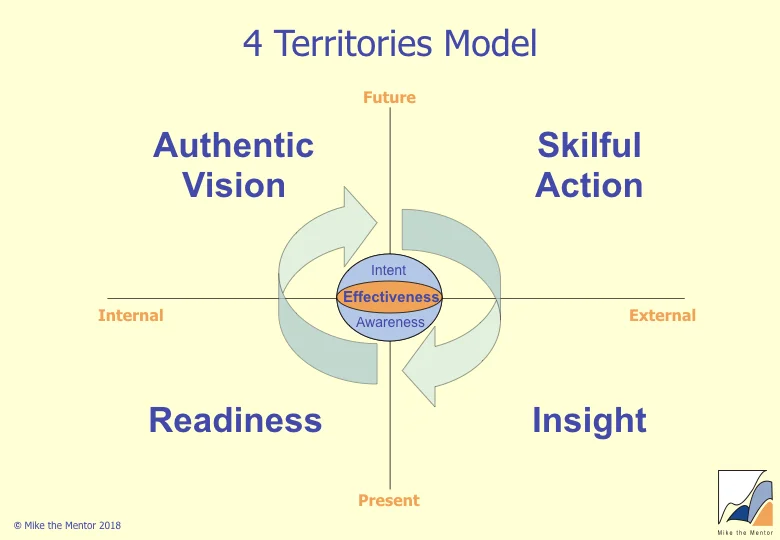Leadership Networking
/Some definitions:
A network is a set of connected relationships with people inside and outside your organisation upon whom you depend to do your work. Within your network you share information, collaborate and solve problems.
Networking is the process of gathering, collecting and distributing information for the mutual benefit of you and the people in your network. You are not selling, you are telling. You are not asking for favours, you are giving valuable information, help or support.
Networking - creating a fabric of personal contacts who will provide support, feedback, insight, resources and information.
Leadership networking is about building relationships and making alliances in service of others - customers, clients, constituents, peers, bosses, and employees - and in service of the organisation's work and goals. A robust leadership network helps provide access to people, information and resources
3 distinct but interdependent types of networking:
Operational - to help the person manage current internal responsibilities
Personal - to help boost the person's personal development
Strategic - to open the person's eyes to new business directions and the stakeholders they would need to enlist - almost everyone underutilises this
| 1. Operational | 2. Personal | 2. Strategic | |
| Purpose | Get work done efficiently. Ensure cooperation and coordination among people who have to know and trust one another to accomplish their immediate tasks | Enhance personal & professional development; provide referrals to useful information and contacts, and often developmental support such as coaching and mentoring - and can provide a basis for strategic networking | Figuring out future priorities and challenges and how their contribution fits into the big picture; enabling the aspiring leader to marshal information, support and resources from one sector of the network to achieve results in another. |
| Location and temporal orientation | Contacts are mostly internal and oriented towards current demands | Contacts are mostly external and oriented towards current interests and future potential interests | Contacts are internal and external and oriented towards the future |
| Players and recruitment | Key contacts are relatively non-discretionary; they are prescribed mostly by the task and organisational structure, so it is very clear who is relevant | Key contacts are mostly discretionary; it is not always clear who is relevant | Key contacts follow from the strategic context and the organisational environment, but specific membership is discretionary; it is not always clear who is relevant |
| Network attributes and key behaviours | Depth: building strong working relationships | Breadth: reaching out to contacts who can make referrals | Leverage: creating inside-outside links |
Networks deliver 3 unique advantages:
Private information: public information is easily available - to make good decisions we also need the private information that is less readily available - the quality of this information depends on the level of trust in your network
Access to diverse skills sets: individual success is tied to the ability to transcend natural skill limitations through others
Power: traditionally executive power was embedded in a firm's hierarchy. When corporate organisations became flatter, that power was repositioned in the network's information brokers. The most powerful brokers are those that connect separate clusters. Cultivate powerful brokers - particularly those who aren't in positions of formal authority (since that is the place where everyone else looks)
The 6 critical requirements of leadership networking:
Leadership networking demands authenticity: have a genuine objective of building relationships providing support, and accomplishing the work for the benefit of the organisation. Authenticity generates trust. People will see through networking that is self-serving or manipulative.
Leadership Networking trades in resources: your resources include information, services, access and power. Know your assets and share/barter them
Leadership Networking calls for thoughtful and deliberate use of power: power is defined as the ability to get things done. In the context of Leadership Networking, there are 3 types of power:
Positive Reputation gives you power
Connections to key influencers and decision makers gives you power
Your involvement with the organisation's more important priorities/problems gives you power
Leadership Networking requires skilful communication: you need to make others aware of what you can offer
Leadership Networking calls for savvy negotiating skills
Leadership Networking means managing conflict
Barriers to building a Leadership Network
All the following sorts of difference can make Leadership Networking more difficult:
Operational differences: eg adversarial culture, networking being counter-culturalLevel differences: networking up/down
Demographic differences: networking with people who differ with respect race, gender, age, county of origin, socioeconomic status
Your own personality / patterns of behaviour.
Leadership Networking:
Learn from those who network wellInvite others: lunch them, find time for conversations, invite them to your meetings, to eventsInvite yourself
Ask for feedback about you and your group
Work with others: volunteer for projects than give you the chance to work across functions
Be direct: tell people what you're doing and why it matters to help others connect to you
Be an information hub
Get mentored by successful leadership networkers
Find a networking ally for mutual support
Recognise that networking is one of the most important requirements of your job
Take every opportunity to give to and receive from the network
Potent networks are not forged through casual interactions but through shared activities including cross-functional teams, interdepartmental initiatives, sports teams community service ventures, voluntary associations, for-profit boards and charitable foundations
Find a context powerful enough to make you feel great about networking - this is the only thing you need (pretty much) to become a great networker.
What difference do you want to make in your organisation / the world? Networking is one of the key elements in achieving that.
Get very clear about your priorities - and in particular the priorities you will need to focus as you develop further as a leader - and you will have a natural motivation that draws you to network.
Don't just have priorities that focus on you - have priorities that focus on the organisations and systems you are in - priorities that others can be enrolled in achieving
Convey friendship, support and relationship through your interactions
Make networking contacts where the only outcome you seek is the opportunity to see if you can add value to the other
Don't keep score.
Don't need people to respond in a particular way
Be committed to the success of the people in your network
Determine how you could be a resource for each of the people in your network - and then tell them what you can offer them.
Sources:
How Leaders Create and Use Networks, Ibarra and Hunter, HBR, pp 40-47 January 2007
Power Networking, Donna Fisher and Sandy Vilas.
Leadership Networking: Connect, Collaborate, Create, Grayson and Baldwin, CCL
How to Build your Network, Uzzi and Dunlap, HBR, pp53-60, December 2005
The Network Effect by Tony Newton and Judith Perle is a useful guide to the actual practice of networking.


